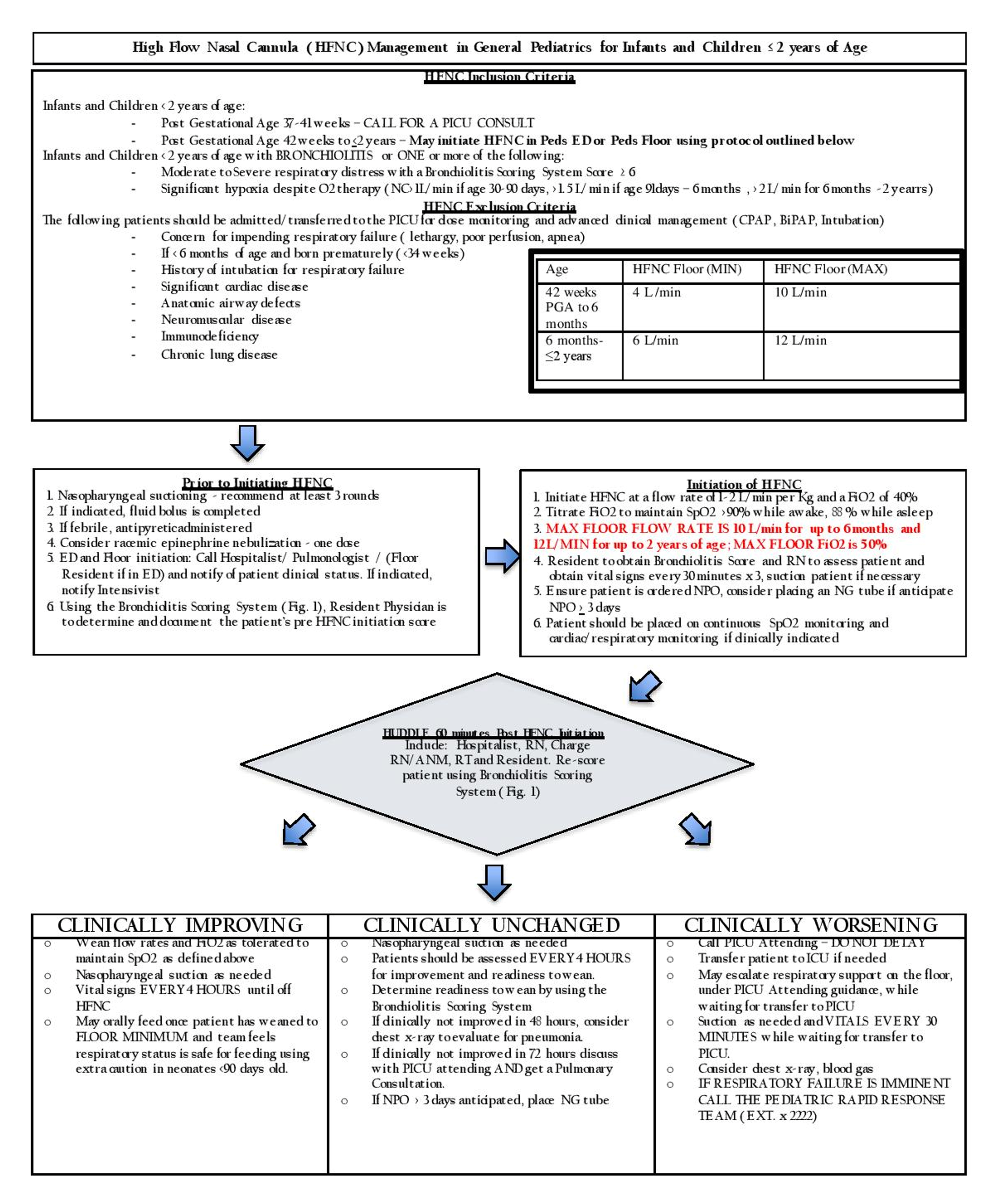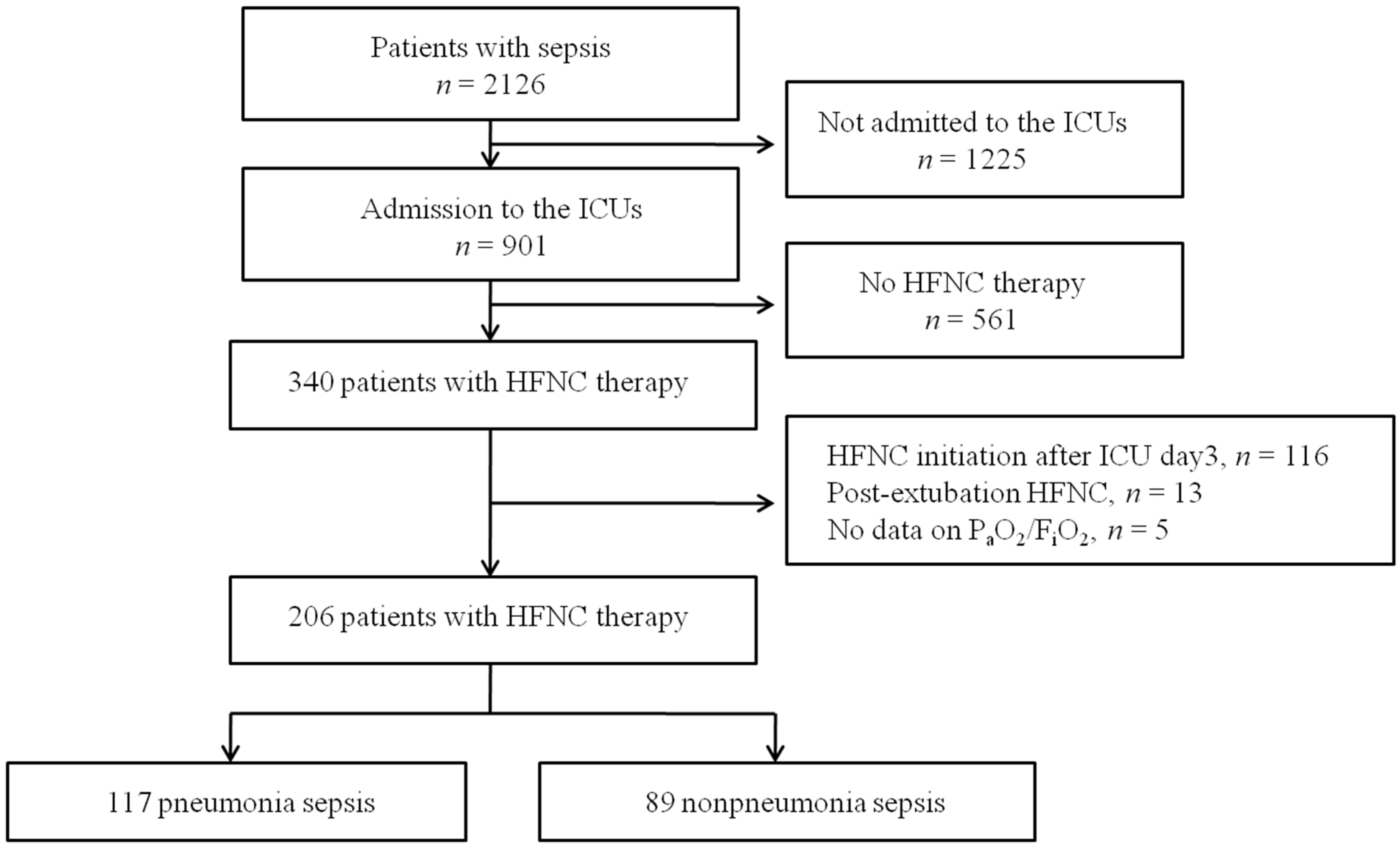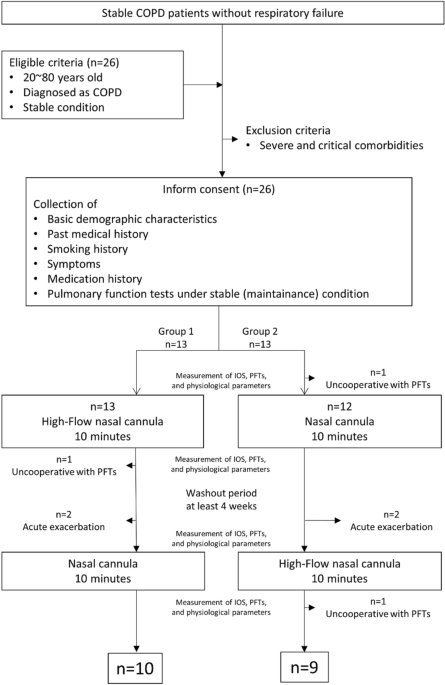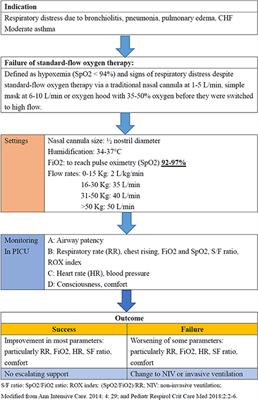high flow nasal cannula flow rate range
Once prescribed flow rate is reached assess requirement for supplemental oxygen. 34 It has been shown to confer many potential advantages compared with traditional oxygen delivery devices and leads to improved physiological outcomes.

What Is A High Flow Nasal Cannula Hfnc
However patients with respiratory distress can have much higher peak inspiratory flow rates which can cause the patient to entrain room air into the lungs.

. Each patient received HFNC delivered by both systems in sequence with flow rates of 05 1 15 and 2 Lkg per minute to a maximum of 30 Lmin. Epub 2017 Aug 12. Flow rates of 1-4 litres per minute are used with nasal cannulas equating to a concentration of approximately 24-40 oxygen.
Start the high flow nasal cannula system in room air ie. The oxygen is delivered through small prongs that sit in the nostrils. Humidified air was delivered at between 60 Lmin to 500 Lmin to condition their pulmonary and cardiovascular systems.
Flow rates of up to 6 litres can be given but this will often cause nasal dryness and can be uncomfortable for patients British Thoracic Society 2008. Without a tremendous oxygen supply a HFNC setup would be difficult at best in the prehospital or critical care. The aim of this study was to assess retrospectively whether the average inspiratory flow velocity-based initial flow rate in high-flow nasal cannula HFNC therapy could be well tolerated and safely used for infants and children hospitalized with moderate to severe respiratory failure.
The Relationship between High Flow Nasal Cannula Flow Rate and Effort of Breathing in Children. Set FiO2 from 21 to 100. What are flow rates commonly used in nasal high flow research.
What is the flow rate for a nasal cannula. HFNC is indicated for patients with respiratory failure due to various underlying conditions. Nasal prongs should not completely occupy the nares.
25 In recent years HFNC is being. An emerging delivery method for supplemental oxygen is high-flow nasal cannula HFNC. Flow rate for HFNP Therapy is the same for all patients regardless of medical condition.
High flow nasal cannula is. It also helps clear carbon dioxide from the airway. 1 HFNC was introduced for humans in the mid-1990s.
The high-flow nasal cannula HFNC is a novel oxygen supply device capable of delivering up to 100 humidified and heated oxygen at a maximum flow rate of 60 lmin. This can result into an oxygen dilution and the patient will not receive the precise amount of oxygen that is desired. New Data Worth the Weight.
Authors Steven L Shein 1 Katherine N Slain 1 Alexandre T Rotta 2 Affiliations 1 Division of. The flow rates make HFNC a form of non-invasive ventilation NIV. Wall oxygen source runs through a heater and humidifier.
That the majority of the studies required flows of 45 Lmin. In a review of NHF controlled studies using a systematic search of the PubMed database it was shown that. New Data Worth the Weight J Pediatr.
High Flow Nasal Cannula Flow Rates. The heat and humidified high-flow nasal cannula or as most call it high-flow nasal cannula HFNC isnt just a standard nasal cannula turned up to very high flow rates. The flow rates used ranged from 10 Lmin to 60 Lmin and.
Both are capable of delivering a mix of air and oxygen with an inspired oxygen fraction FiO 2 ranging between 02110. High flow nasal cannula HFNC is used to give oxygen at a high rate. Set oxygen flow rate up to 8 Lmin on pediatric tubing up to 60Lmin in adults 10Kg 2 L per kg per minute max flow 60 Lmin start off at 6Lmin and increase up to goal flow rate over a few minutes to allow patient to adjust to high flow.
High Flow Nasal Cannula Flow Rates. Traditional nasal cannula delivers flow rates of 26 L min. High-flow nasal cannula flow rates above 40 Lmin associated with choking increased risk of aspiration and was associated with decreased swallowing function in healthy volunteers.
HFNC was patented in 1988 to prevent exercise-induced pulmonary hemorrhage in race horses. In children flow rates 6 Lmin are generally considered high flow 1. There are 2 settings o O2 Flow rate range is from 5 to 60 Lminute set by flowmeter o FiO2 range is 21 to 100 on digital display.
Some authors adjust the flow rates on body weight and recommend using 2 Lkgmin which provides a degree of distending pressure 3 - 5 and reduces the work of breathing 6. The lungs do not have to work as hard to get air in and out. It takes gas is able to heat it to 37 o C with a 100 relative humidity and can deliver 021 - 100 fraction of inspired oxygen FiO 2 at flow rates of up to 60 liters Lmin.
The high-flow nasal cannula HFNC is a unique mode of noninvasive respiratory support that delivers warmed humidified oxygen with a fraction of inspired oxygen FiO 2 of 021 to 10 and a flow rate as high as 60 Lmin. The high flow rate makes breathing easier. HFNC devices allow modification of only two variables the percentage of oxygen being delivered and the rate of gas flow.
It may be important to assess swallowing. High-flow nasal cannula refers to heated and humidified oxygen delivered through a wide bore nasal cannula at flow rates of up to 60 liters per minute LPM. Thirty-three patients without underlying diseases 22 males.
The optimal HFNC flow rate to reduce effort of breathing in infants and young children is approximately 15-20 Lkgminute with more benefit seen in children 8 kg. The patient wears soft pliable wide bore nasal prongs which fit snugly into the nares and are held in place with a strap. Read the full review here.
Following the trials patients remained on HFNC as per usual care with twice-daily PRP measurements until weaned off HFNC. Flow rates 20 Lmin resulted in lower number of swallows during the repetitive saliva swallowing test compared to 0 and 10 Lmin p 005. There are at this time only two such devices on the market.

Cureus The Use Of High Flow Nasal Cannula And The Timing Of Safe Feeding In Children With Bronchiolitis

Jcm Free Full Text Failure Of High Flow Nasal Cannula Therapy In Pneumonia And Non Pneumonia Sepsis Patients A Prospective Cohort Study Html

High Flow Nasal Cannula Improves Respiratory Impedance Evaluated By Impulse Oscillometry In Chronic Obstructive Pulmonary Disease Patients A Randomised Controlled Trial Scientific Reports

How Does High Flow Nasal Cannula Hfnc Work Medmastery

Oxygenation Parameters And Respiratory Rate In High Flow Nasal Cannula Download Table

High Flow Nasal Oxygen What S What

High Flow Nasal Cannula Oxygenation Utilization In Respiratory Failure European Journal Of Internal Medicine

How Does High Flow Nasal Cannula Hfnc Work Medmastery

Heated And Humidified High Flow Nasal Oxygen In Adults Practical Considerations And Potential Applications Uptodate

Initial Or Starting Flows Of High Flow Nasal Cannula In A Pediatric Download Table

40 Vs 60 L Min What S The Difference Between Vapotherm High Velocity Therapy And High Flow Nasal Cannula Vapotherm

Characteristics And Outcome Of High Flow Nasal Cannula Episodes Download Table
Nasal Cannula O2 Flow Rate Online 59 Off Www Ingeniovirtual Com

Frontiers High Flow Nasal Cannula Therapy In Children With Acute Respiratory Distress With Hypoxia In A Pediatric Intensive Care Unit A Single Center Experience

Pdf Modalities And Complications Associated With The Use Of High Flow Nasal Cannula Experience In A Pediatric Icu Semantic Scholar

How Does High Flow Nasal Cannula Hfnc Work Medmastery

High Flow Nasal Cannula Oxygen Therapy In Acute Respiratory Failure At Emergency Departments A Systematic Review The American Journal Of Emergency Medicine

End Expiratory Esophageal Pressures Generated By Different High Flow Download Table

High Flow Nasal Cannula Therapy For Acute Respiratory Failure In Patients With Chest Trauma A Single Center Retrospective Study Injury